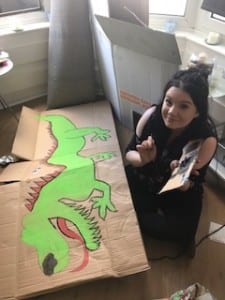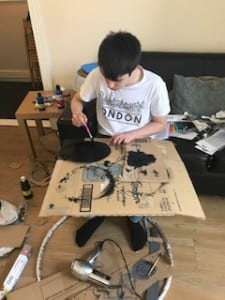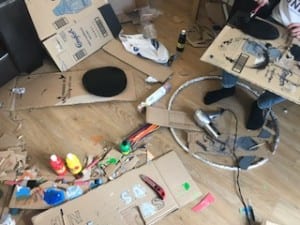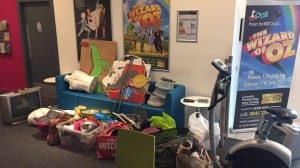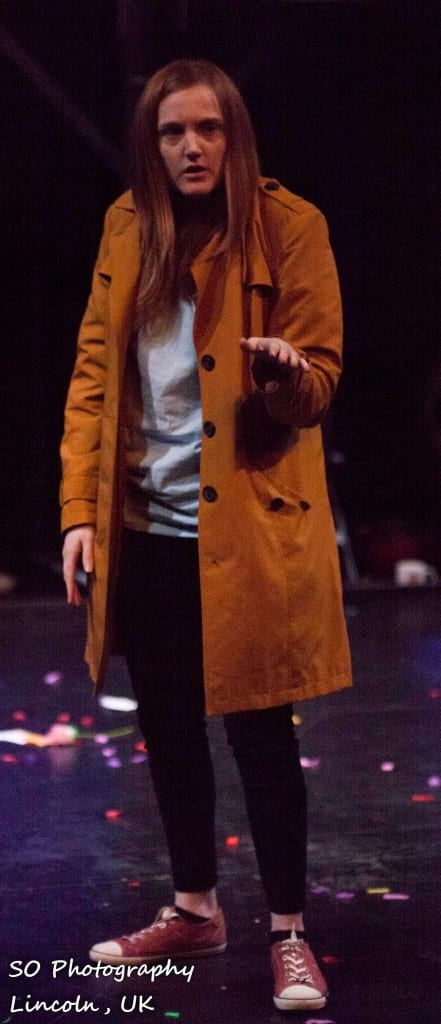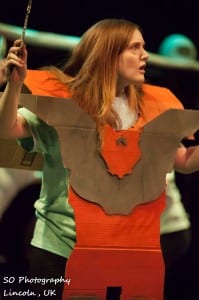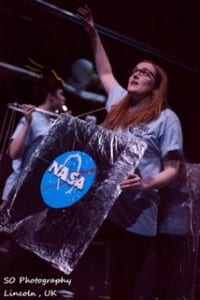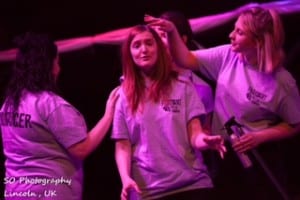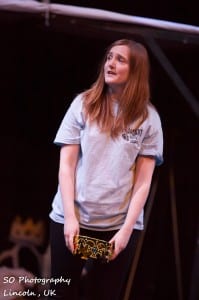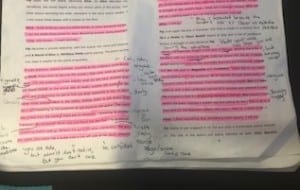After tech day we were all very nervous but excited for our performance, It was amazing to see the set come together and to get a feel for the space. Yet not everything went according to plan and changes had to be made at the last minute.
Nerves were therefore running high on show day, we had all worked so hard and wanted to ensure it would be a success, however we weren’t sure how the audience would react to our ‘tongue and cheek’ style of humour. Watching the audience walk in was a mix of both extreme excitement and nerves. However, as soon as the show started and Brodie came on stage full of energy, the audience immediately responded positively and provided us with plenty of energy to bounce off. For me, it was a new experience to perform in such a Meta theatrical way and to have no real fourth wall, but nevertheless I found it a very enjoyable experience.
As with many first time shows not everything went according to plan, but due to the makeshift nature of our piece and the way in which the problems were handled, it wasn’t really noticeable to anyone who hadn’t previously seen the show.
Overall, I think we achieved our goal of creating an entertaining yet thought provoking piece of theatre, one which got our core message about escapism across to the audience.
‘Think of escapism like sugar or salt. You can sprinkle it on top of your life to make it better, but too much will ruin the whole thing’ (Allen, 2015).
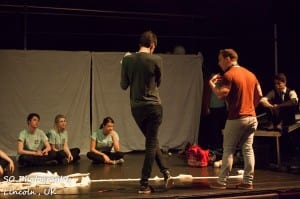
Preparing for the show (Odonnell, 2017)
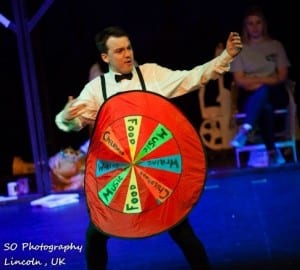
Brodie and the wheel of Escapism (Odonnell, 2017)
If we were to make more shows as fragment theatre company, we would stick to using dark humour in order to make our audience’s laugh, but as well as to get a deeper meaning across. This is due to the fact that we as a collective are all passionate about making positive changes to the world, but we are also accutely aware that in our current political climate we all need a good laugh to ‘get away’ for a short while. Furthermore we would keep the makeshift elements to our shows, as we are interested in the style of post dramatic theatre and the ‘manufactured performance’. This Makeshift element would also make it more feasible for us to tour.
Citations
Allen , P (2015) How to snap back to reality when “escapism” becomes “avoidance”. [online] Lifehacker. Available from http://lifehacker.com/how-to-snap-back-to-reality-when-escapism-becomes-av-1723091630 [accessed 20 may].
Odonnell, S. (2017) preparing for the show. Lincoln: SO Photography.
Odonnell, S. (2017) Brodie and the wheel of Escapism. Lincoln: SO photography.
